jamesp
Cave Dweller 
Member since October 2012
Posts: 36,612
|
Post by jamesp on Feb 11, 2019 9:59:20 GMT -5
2 shades of yellow, 1 shade orange, the 'black' glass is actually dark purple. Tumble polished surface. Sawn and tumbled from a 15 pound brick melted via pot melt method. Alternating plates of a series of 4 colored glass plates were stacked flat/horizontally in a stainless steel pot and melted and allowed to pour thru a 1.5 inch hole in pot into a brick mold. End result is similar to sticking 20 balloons of 4 different colors inside of each other and blowing them up into a rectangular mold. The jagged effect is from (lateral ?)compression of the layers. Gaps in the color are gaps between the stacked plates. Some layers are not in sequence due to not maintaining the 4 colors in the same stacking sequence. Sort of a man made controlled lava flow. Performing same process with 20 different colors simply makes a 20 color layered glass but may introduce fractures and bubbles due to compatibility issues with different colors of glass. 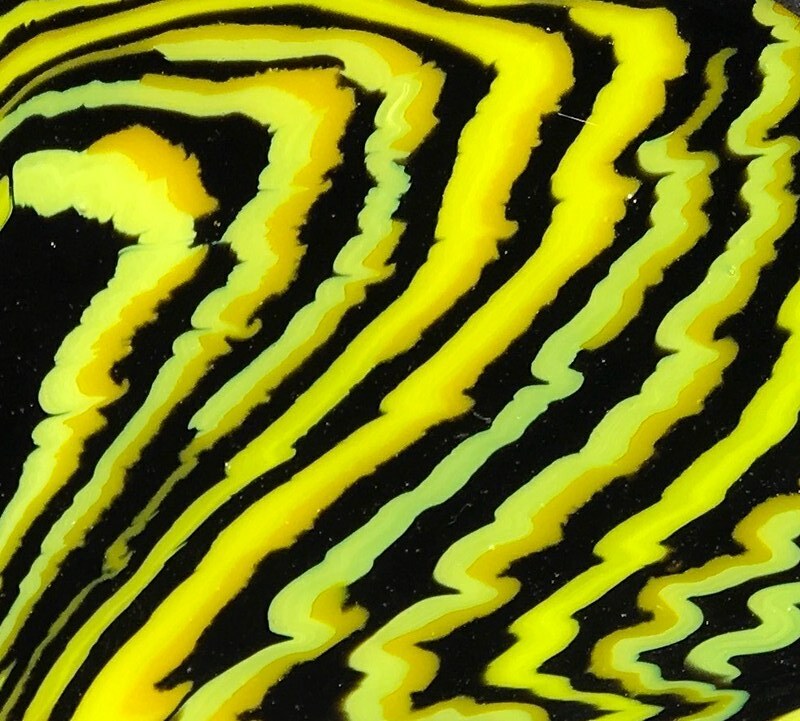 |
|
jamesp
Cave Dweller 
Member since October 2012
Posts: 36,612
|
Post by jamesp on Feb 11, 2019 10:28:18 GMT -5
Same method but more colors. The 'black' areas are actually clear colors visible when back lit. Also a ~14 pound brick. Resulting increase in bubbles from more colors of glass therefore causing more chemical reactions -perhaps-. Jagged shapes perhaps caused by one color 'traveling' into another color. Lateral compression ? Not sure. Don't care. Like the results. Interesting dance nonetheless. Both photos done with iPad. 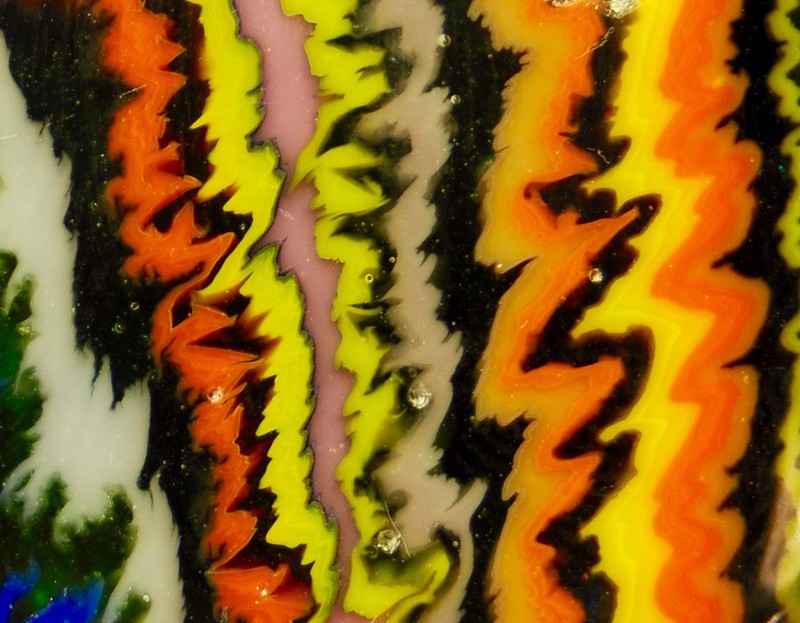 |
|
|
|
Post by miket on Feb 11, 2019 10:43:34 GMT -5
Beautiful
|
|
|
|
Post by Pat on Feb 11, 2019 10:48:15 GMT -5
That will knock your socks off!!
|
|
jamesp
Cave Dweller 
Member since October 2012
Posts: 36,612
|
Post by jamesp on Feb 11, 2019 12:04:48 GMT -5
That will knock your socks off!! As long as it does not curl your toes Pat  . |
|
jamesp
Cave Dweller 
Member since October 2012
Posts: 36,612
|
Post by jamesp on Feb 11, 2019 12:05:46 GMT -5
It is exciting to cut those bricks open not knowing what may have happened within miket. |
|
|
|
Post by miket on Feb 11, 2019 12:28:13 GMT -5
It is exciting to cut those bricks open not knowing what may have happened within miket . Almost like slabbing a rock  |
|
fishnpinball
Cave Dweller  So much to learn, so little time
So much to learn, so little time
Member since March 2017
Posts: 1,491 
|
Post by fishnpinball on Feb 11, 2019 15:44:43 GMT -5
Fractals
|
|
jamesp
Cave Dweller 
Member since October 2012
Posts: 36,612
|
Post by jamesp on Feb 11, 2019 16:52:36 GMT -5
It is exciting to cut those bricks open not knowing what may have happened within miket . Almost like slabbing a rock  If you saw creatively say for instance parallel or a slight angle to the color bands a whole new show can begin all over again. Sawing is the best part of processing these glass bricks miket. |
|
jamesp
Cave Dweller 
Member since October 2012
Posts: 36,612
|
Post by jamesp on Feb 11, 2019 16:54:45 GMT -5
Fractal patterns would be the ultimate fishnpinball. If you see fractal behavior please inform me of where. |
|
fishnpinball
Cave Dweller  So much to learn, so little time
So much to learn, so little time
Member since March 2017
Posts: 1,491 
|
Post by fishnpinball on Feb 11, 2019 18:40:21 GMT -5
The interplay on the second picture resembles fractals.
|
|
jamesp
Cave Dweller 
Member since October 2012
Posts: 36,612
|
Post by jamesp on Feb 12, 2019 7:23:42 GMT -5
The interplay on the second picture resembles fractals. Perhaps a sequence of the melting process will help understand possible fractal creation. Thanks for introducing fractals, never was aware. The 1st photo is the layers of colored glass that was melted and it poured thru the hole in the pot and into the brick mold. Lol, I was bit in a haze when developing these processes but kept photo records. There was problems with fractures due to cobalt blue and opaque teal. These colors have been omitted from future melts. It took a few weeks for the fractures to set in. Melted Oct.3, sawn Oct.5 2018. www.flickr.com/photos/67205364@N06/47018830282/in/album-72157689632371733/lightbox/Defects caused by cobalt blue and opaque teal adversely effected the glass quality thru out the brick. 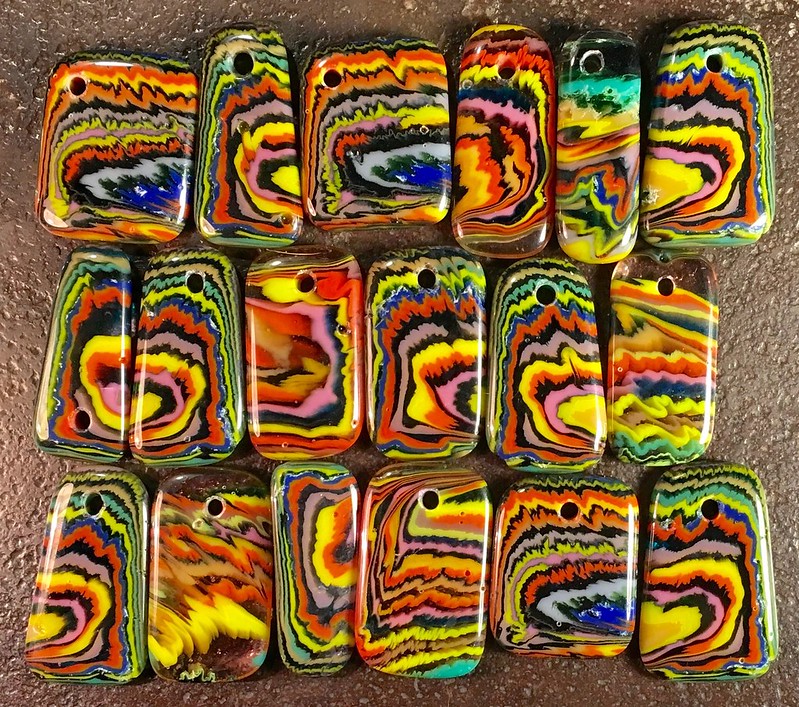 |
|
fishnpinball
Cave Dweller  So much to learn, so little time
So much to learn, so little time
Member since March 2017
Posts: 1,491 
|
Post by fishnpinball on Feb 12, 2019 16:01:21 GMT -5
Looks like the fractal patterns came from passing through the hole. Brings up a question of the shape of the hole and possible effects.
|
|
jamesp
Cave Dweller 
Member since October 2012
Posts: 36,612
|
Post by jamesp on Feb 14, 2019 9:40:25 GMT -5
Looks like the fractal patterns came from passing through the hole. Brings up a question of the shape of the hole and possible effects. The size of the hole and even more critical is the amount of distance of the exit hole above the brick mold i.e. 'the distance poured'. People have been melting 'hail Mary pot melts' for years using leftover glass scraps but not many have ever fixed most of the variables in this pot melt process. So this single basic fixed size one-hole-pot-melt with equal pouring distance is used on every melt. All dimensional variables held constant at the pot and mold. All variations are done when stacking the glass in the pot above. In these melts the only variable was stacking different colors of glass for each melt in a stack w/glass laid flat. If the exit hole is close to the brick mold for a short pour there is little distortion, if exit hole is far from the brick mold them much more mixing occurs and resulting chaos. Similar to laminar(layered) and turbulent(mixed) flow as defined in fluid dynamics. Layered flow seems to be occurring in this 'controlled' pot melt.. That is basically the process. I had never seen the word fractals, fractal behavior seems to be describable by series equations which can be freaky complicated. Series equations according to mathematicians describe a bunch of natural phenomena though, especially in plants. Fractals apparently occur in plants commonly according to Youtube videos. The concept of fractals blowing my mind as does these patterns in the glass that somehow resemble fractal behavior. I am just trying to manipulate melted glass to make crazy patterns to tumble polish. If fractal patterns can be produced then all the better. Patterns and colors have some kind of mind tickling effect on me. Glass serving as the perfect medium for accomplishing such. Again apologizing for the rant, but this process and outcome is not something that can be described in 2 sentences. Another type pot melt involving repeat patterns is having a flat pot above with many equal sized holes and pouring onto a flat surface making a constant thickness plate of glass with many repeat patterns. Not sure if the repetition of patterns could be defined as fractals though. Similar to this arrangement but using equal colors: 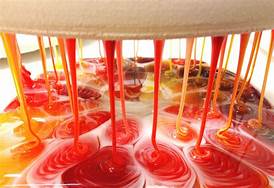 |
|
fishnpinball
Cave Dweller  So much to learn, so little time
So much to learn, so little time
Member since March 2017
Posts: 1,491 
|
Post by fishnpinball on Feb 14, 2019 20:25:59 GMT -5
Long explanations are okay. You also prove why I said they resemble fractals.
Zooming in more on the tip of one of the patterns to see if there are second order fractals forming would be where I would call it fractals.
If that makes sense.
|
|
jamesp
Cave Dweller 
Member since October 2012
Posts: 36,612
|
Post by jamesp on Feb 15, 2019 13:30:10 GMT -5
Long explanations are okay. You also prove why I said they resemble fractals. Zooming in more on the tip of one of the patterns to see if there are second order fractals forming would be where I would call it fractals. If that makes sense. Navigating via fractal patterns in watersheds in the forests of the SE US. If your destination is a big river it is fail proof system of navigating to it. Simply follow small creeks to bigger breeks to yet bigger creeks till you get to the river. A bigger version of a smaller version of similarly shaped paths as you get closer to the river. (is that worded properly ?) Sorta like the blood delivery into the body from a large artery and successively smaller arteries down to the final capillaries. In the case of a watershed you are removing material by erosion in a precise fractal pattern. In the case of the glass it appears fractals are created by adding as the one colored glass ventures into other colors of glass. Perhaps similar to dendritic formations. Awesome sauce. 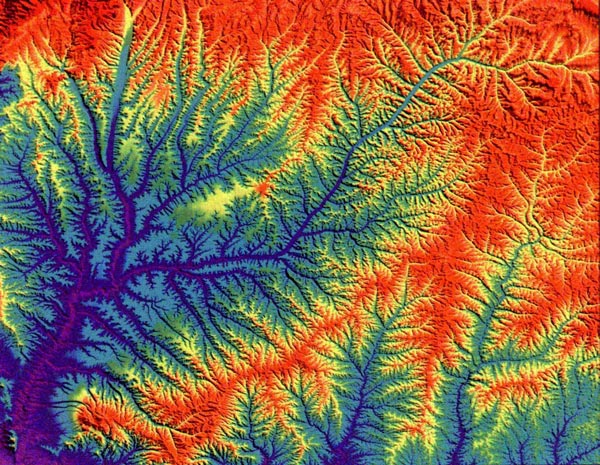 |
|
Kai
spending too much on rocks
 
Member since December 2018
Posts: 331
|
Post by Kai on Feb 15, 2019 13:54:55 GMT -5
Wow, beautiful! Nature is always the first to do such cool patterns and processes... so that we can learn from her.  |
|
|
|
Post by Pat on Feb 15, 2019 14:09:26 GMT -5
I love fractals! The designs, not the math. Also like your awesome sauce style. Thanks for sharing all this.
|
|
jamesp
Cave Dweller 
Member since October 2012
Posts: 36,612
|
Post by jamesp on Feb 16, 2019 10:40:50 GMT -5
Yes Pat, math is nothing but a means to an end to describe quantities, no fun for most folks. But when mathematical behavior like fractals is illustrated the result is mind boggling. Maybe there are some other fractal patterns that can be created by melting glass. Glass being a great medium because of it's wide color variation. Thanking fishnpinball for introducing this new challenge. |
|
jamesp
Cave Dweller 
Member since October 2012
Posts: 36,612
|
Post by jamesp on Feb 16, 2019 10:53:10 GMT -5
Wow, beautiful! Nature is always the first to do such cool patterns and processes... so that we can learn from her.  Lots of patterns in plants Kai. I was in the aquatic plant business for nearly 3 decades. Water allowed space free reproduction of plants making repetitive patterns. Ludwegia: 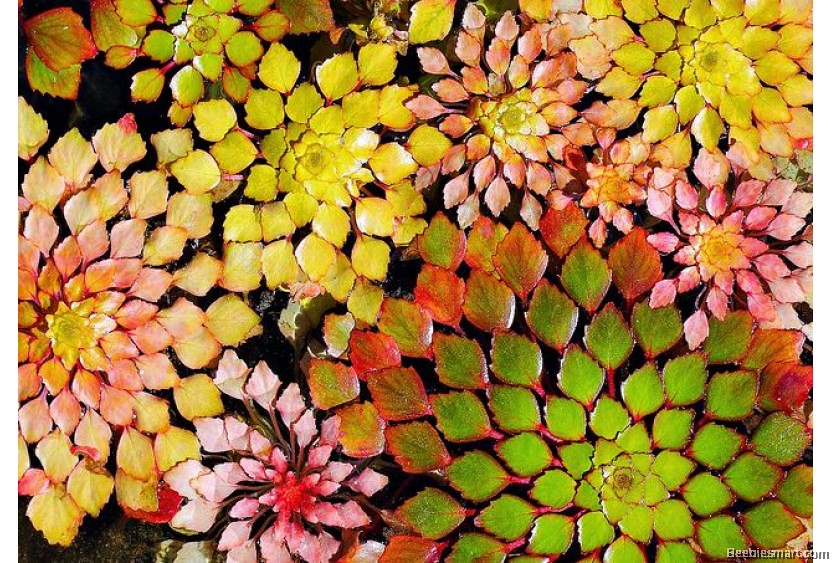 Lemna: 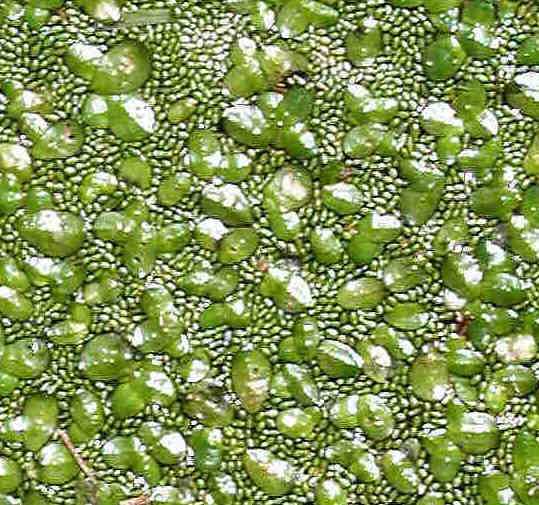 water lettuce: 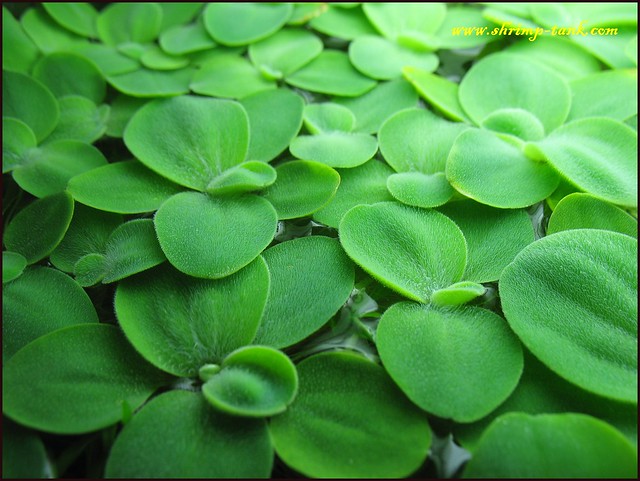 |
|




 .
.












